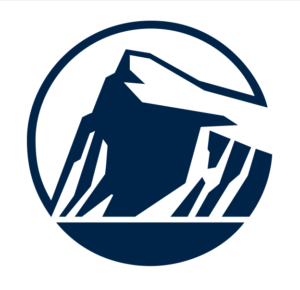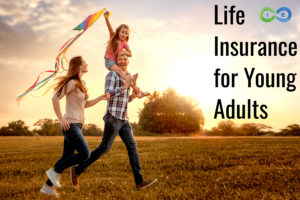Superficially, the difference between term life insurance versus permanent insurance, such as whole life, is that a permanent policy remains effective for your entire life (hence, ‘whole life’), whereas a term policy expires after a fixed period of years (the “term”).
At the conclusion of a term policy’s coverage period – typically 10, 15, 20, or 30 years – the policy ends. You do have the option to convert term life insurance, but this can be expensive since you are converting your term insurance policy when you are older. And with a term policy, after the initial term the premiums increase as you age.
Also, if you die the day after the end of the term (and you have not chosen to convert the policy or renew), your beneficiaries don’t receive a death benefit. That’s an important distinction, especially if you need or want a life insurance pay-out regardless of how long you live.
But it’s not the only distinction. Where term coverage is valueless after the term ends, whole life comes with a cash value component, allowing the policy to serve as both a means of protecting your loved ones in the event of tragedy and as a wealth-building vehicle.
The trade-off is that whole life premiums for a working-age purchaser are notably higher than term life premiums. although this can be mitigated through proper policy design.
Whole life insurance premiums are fixed. You pay the same monthly premium at 63 that you paid at 36. Term coverage is cheap for young, healthy purchasers, but coverage becomes much more costly – or even unavailable – as you approach retirement age.
Cash Value vs Death Benefit
A brief mention here on the difference between the cash value and the death benefit. The cash value, AKA cash surrender value, is the amount of money you receive from the insurance company if you surrender your life insurance.
The death benefit is the amount the insurance company will pay your beneficiary if you die, (minus any outstanding loans).
The whole life policy’s cash surrender value grows over time thanks to a guaranteed rate of return and optional dividends that can be used to purchase additional paid up life insurance. As the cash value grows, so does the death benefit. As the policy nears maturity, typically at age 120 or 121 for new issued policies, the cash value will equal the death benefit.
How Does the Whole Life Policy’s Cash Value Work?
In retirement planning, the cash value offered by a whole life policy is just as important as its permanence. With each premium payment, the policy’s cash value steadily builds until, if the policy stays in place long enough, the cash value eventually equals (or even surpasses in some cases) the original death benefit.
With dividend paying whole life insurance, your death benefit actually INCREASES as the years go by, making your policy more valuable as time passes.
Once the whole life policy has been in place for a few years, the cash value becomes a significant financial resource, even while the policyholder is still living. Because of these duel features – death benefit and cash value – whole life can be viewed as both an insurance and a glorified savings product, earning typically a much higher interest rate multiple than typical savings accounts.
The way it works is that part of each premium payment is applied toward the underwriting costs involved in providing the death benefit, and part is placed in a sort of savings account tied to the policy. The cash value in the account builds up slowly at first but picks up steam the longer the policy remains in place, earning interest at a return rate guaranteed by the insurance company, plus a dividend if the policy is participating whole life insurance.
Assuming all premium payments are made, after a little while the cash value exceeds the total premiums paid, with gains tax-deferred until withdrawn. Additionally, you can always borrow against the cash value at rates that typically amount to a wash (with positive arbitrage being available at times).
What Happens to the Whole Life Policy’s Cash Value When I Die?
Importantly, although a whole life policy’s cash value and death benefit are separate benefits, they are also linked. So, if you tap the cash value for a withdrawal or a loan, you potentially decrease the death benefit your beneficiaries will receive.
And, conversely, if you apply cash value and policy dividends toward additional paid up additions, you can increase the eventual pay-out – sometimes dramatically. When you die, the cash value and death benefit essentially merge, and the insurance company pays the death benefit to the policy’s beneficiaries – not the cash value.
Real Estate Example
Cash value life insurance is an asset similar to real estate. You can think of your policy like a mortgage for a home purchase. With each mortgage payment, you build up equity in the home until, after all the mortgage payments are made, you own the home outright. When you fully pay off the mortgage, you don’t have the home equity and the home as two separate assets. The equity is tied to the home. The cash value of a whole life policy can be viewed as interest-earning equity in the death benefit.
It’s worth noting that certain riders and types of permanent life insurance other than traditional whole life are available that provide for payment of death benefits and accrued cash value. As you might suspect, though, premiums will be higher for a policy that pays out both.
How Can I Use a Whole Life Policy’s Cash Value While I am Still Living?
As with equity in real estate, there are multiple ways to put a whole life policy’s cash value to beneficial use. The best use depends on your individual situation and goals, so it’s important to plan ahead when selecting a policy to ensure that both the death benefit and cash value provide what you need. With that said, there are several general strategies for taking advantage of a whole life policy’s cash value.
Using Cash Value to Cover Premiums.
After a policy has been in place long enough, it reaches a point where it is “paid up.” Paid up life insurance means that enough cash value has accrued that you can elect to use cash value to cover the premium payments, which is particularly helpful for retirees on a fixed budget. The paid-up approach also works well if your plan is to use life insurance proceeds to fund a trust for the care of a loved one, such as a special needs trust, because it avoids the risk of a policy lapsing due to missed premiums.
Most policies are timed to reach paid-up status when you reach your life expectancy. But policies can also be tailored to mature after a defined number of years – either before or after life expectancy. Through the use of limited pay whole life insurance, you can tailor the policy to be paid up upon a certain period of time, such as 7, 10, 15 or 20 years.
All things being equal, the less time until a policy is paid-up, the greater the monthly premium payments will be, and vice versa. Notably, if you continue making premium payments after a policy is paid-up, both the cash value and the death benefit will increase substantially beyond the original face value of the policy.
Surrendering a Whole Life Policy.
A policy’s cash value is sometimes referred to as its “cash surrender value” because it’s more or less the amount that the insurance company would pay you if you decided to cancel the policy and cash out.
When you surrender a life insurance policy, you receive a check from the insurance company for the cash surrender value, and you relieve the insurance company of its obligation to pay the death benefit to your beneficiary.
Any policy growth you receive (i.e., the surrender value minus the total premiums you have paid) will be taxable income, and there may be surrender fees – particularly for younger policies.
Obviously, this isn’t a good option if you still need life insurance (unless you intend to use the surrender value to procure another policy). But it can make good sense if you’ve reached an age when your former dependents no longer rely on you financially, life insurance is not part of your estate plan, and you could use the money to help fund your retirement.
However, we suggest a better way to utilize your cash value and retain your policy.
Partial Withdrawals and Policy Loans.
A compromise between cashing out and reinvesting cash value for higher coverage is to make a partial withdrawal or borrow against the policy. If you make a partial withdrawal, or fail to repay a loan, the death benefit will be reduced by the withdrawn amount or loan balance. As long as you repay a loan, though, it won’t affect the death benefit.
Policy loans come with interest, but the rate is usually low. So, when you need ready cash, borrowing against a whole life policy is a great option, particularly when used to purchase other income producing assets, such as real estate.
Partial withdrawals are a popular strategy to supplement retirement income without completely forgoing death benefits.
Say, for example, you have a paid-up policy with a $200,000 face value. The kids are grown-up and self-sufficient, but you still want enough life insurance to pay for funeral and estate costs and taxes, with a little cash left over. You could earmark half of the policy’s cash value as an emergency fund or for special occasions – or as a reserve to avoid withdrawing from other investments when markets are down.
The policy’s pay-out will be reduced by whatever you withdraw, but there should be a sufficient death benefit left over to accomplish your estate-planning goals.
The precise effect that a withdrawal has on a policy’s death benefit varies according to the language of the specific policy and the amount of cash value that has accrued. Generally, a policy that has been in place longer and built up more cash value and growth will be less likely to charge withdrawal fees and will have a lesser reduction to the death benefit.
Choosing the Best Use for Cash Value.
Versatility is one of the biggest selling points of whole life insurance, as illustrated by the many beneficial uses of cash value. For most long-term policyholders, the best approach involves putting cash value to work one way or another – whether through a loan, complete or partial withdrawal, or funding additional premiums and/or a greater death benefit.
Ultimately, though, a policy’s cash value should be used strategically according to your priorities and objectives.
Now…
We’ll be the first to admit that we’ve gone over a lot of information here. We’ll also be the first to admit that in many situations, choosing to purchase a whole life insurance policy rather than a term life insurance policy may not make any sense at all.
Which is why…
All that we really hope that you take away from this article is that when someone is considering purchasing a life insurance policy, price should only be one factor in determining which “type” of life insurance policy is going to be the best for them.
That and…
It’s important to consult with an expert so that if and when you do decide to purchase a life insurance policy, you’re sure that it’s going to be the right one for you and your family and not simply one that the insurance company thinks is right for you!
So, what are you waiting for? Give us a call today and see what we can do for you!



